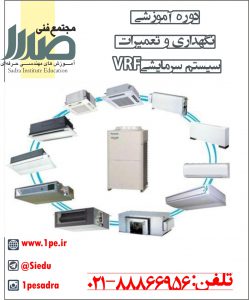Building Wide-Area Networks with BACnet® -Part 1
By Bill Swan, Alerton
There are devices and methods by which BACnet networks can be interconnected over Internet Protocol, wide-area networks. The first of two parts, this article looks at network basics, the use of IP internets to connect systems, and BACnet/IP PAD devices.New technologies create demands for new capabilities. BACnet is no exception.
Initially envisioned as a building-wide network protocol, BACnet (ANSI/ASHRAE Standard 135-1995, Building Automation Control Network) is now being used to join buildings together on campus-wide internetworks. And there is increasing demand to interconnect BACnet systems across cities, regions, countries, and even continents.
In nearly all cases, the desire is to use an existing Internet Protocol (IP), wide-area network (WAN) already spanning the area to join the BACnet systems. However, BACnet devices and IP devices speak different protocols, different languages; one cannot simply plug them into the same network and expect them to work.
Special devices are required in order for BACnet messages to be transported across IP networks to BACnet devices in distant locations. These devices, described in the standard, are already in use.Last year, for instance, BACnet networks at the Phillip Burton Federal Building (San Francisco), Cornell University (Ithaca, NY), and the National Institute of Standards and Technology (Gaithersburg, MD) were all joined together over the Internet, in a public demonstration of a very wide area BACnet system indeed.The following is a look at the devices and methods by which BACnet networks are interconnected over IP WANs.
INTERNETWORKING AND ROUTERS
It is often necessary to set up multiple networks to communicate with each other. This may be required because different network types with different characteristics are being used.
For example, Ethernet, which is frequently used in building automation systems (bas), works well as a building-wide network, but it cannot span a continent. Other network technologies must be used for such long distances. Thus, multiple networks must be used if buildings in distant locations are to be joined in a single system.
For multiple networks to communicate, there must be a common language or protocol used by the devices on those networks. For BACnet devices, the protocol is BACnet.1 For IP networks, of course, it is the underlying protocol used by the Internet itself, as well as by many private networks.
The protocol defines the format of the message packets exchanged between devices. It also defines the format of the message frame, the surrounding envelope that determines what destination address should be used, and what protocol the frame is using.
Some protocols, such as BACnet, define the entire frame and packet together. Other protocols, such as IP, can state within the frame that a different protocol is to be used to decode the packet within.
When multiple networks using the same protocol for their packets are joined, the result is called an internetwork.2 (It is also called an "internet," but that term is too easily confused with the Internet, the best-known internetwork.) Internetworks can also be created with multiple networks using different protocols if a device called a protocol converter, also known as a gateway, is used to translate the messages going back and forth.
The devices that join the networks of an internetwork are known as routers. Unlike most devices that connect to a single network, routers connect to two or more networks for the purpose of forwarding messages sent by a device on one network and destined for a device on another network.
In complex internetworks, a message may have to be forwarded through several routers and across several networks before reaching its destination.
A router must be able to understand the frame's protocol in order to determine whether or not a message is destined for another network. If the message is destined for a device on the same network, the router must not pass it on; doing so would flood the rest of the internetwork with extraneous messages. Thus, BACnet routers must understand BACnet frames and IP routers must understand IP frames.
BACnet internetworks that are connected only by routers that understand BACnet frames are defined here as directly connected internetworks. (In Figure 1, networks 102 and 103, but not 101, comprise a directly connected internetwork.) This distinguishes them from the super-internetworks, serving to join multiple directly connected internetworks, which can be created by devices that allow BACnet packets to be carried within IP frames.FIGURE 1: A physical BACnet internetwork using PADs.THE PROBLEM AND ITS SOLUTIONS
The problem one encounters when trying to connect the component BACnet networks (or directly connected BACnet internetworks) of a wide-area BACnet internetwork together over an IP wide-area network, is that IP routers do not understand BACnet frames.BACNET/IP PADS
If an IP router has a connection to a BACnet network and receives a BACnet frame that needs to be delivered to another network, it will do...nothing.3
The problem is solved with special kinds of BACnet devices that also understand the IP protocol. Such a device is able to take a BACnet message and enclose it within an IP frame that an IP router can read and deliver across an IP internetwork.
At the destination, another such BACnet device extracts the BACnet message from the IP frame, reads it, and forwards it if necessary.
Annex H.3 of the original BACnet standard describes this technique known as "tunneling," by which devices called B/IP PADs (BACnet/Internet-Protocol Packet-Assemblers-Disassemblers), also known as Annex H.3 devices, act like routers to transport BACnet messages across IP internetworks.
A recent addition to the BACnet standard, Annex J-BACnet/IP, describes a flexible extension of the original concept. It even includes descriptions of BACnet/IP devices that always enclose their BACnet messages within IP frames.
To connect BACnet networks over IP networks, a special kind of router called a BACnet/IP PAD (BACnet/Internet-Protocol Packet-Assembler-Disassembler) is placed on every BACnet network (or directly connected internetwork) that is to be connected over an IP network to another BACnet network. The PAD need not be a physically distinct device; it can be part of a device that performs other operations, such as a building controller.VIRTUAL NETWORKS
The PAD acts like a BACnet router. When it receives a BACnet message destined for a distant BACnet network, a network reachable only through an IP internetwork, it wraps the message inside an IP frame, gives the frame the destination IP address of the corresponding PAD on the destination BACnet network, and sends the frame on its way over the IP network.
The receiving PAD removes the BACnet message from its IP frame and transmits the message to the destination device on the local LAN, just as if it had come from a BACnet router.
The BACnet devices originating and receiving the messages are unaware of the special operations used to deliver the messages. They communicate with the PADs as if the PADs were ordinary BACnet routers connecting BACnet networks.
Two configurations of PADs exist, as shown in Figure 1. The first has a single physical network connection, or port, typically to an Ethernet network, through which both BACnet and IP frames are transmitted and received.
It requires an IP router to be connected to this network in order to have its IP frames delivered to the distant PAD. (The PAD may also have other BACnet-only ports.)
The second PAD configuration has different ports for BACnet and IP frames. The IP port may thus be directly on the IP internetwork connecting the BACnet networks. Typically, the PAD appears to the IP internetwork as a device communicating using IP, not as an IP router.
Depending upon the implementation, a set of intercommunicating PADs can look to devices on the BACnet networks like a single physical router with a port on each of the BACnet networks to which it is connected.
The IP routers and networks that participate in the communications are completely invisible to the BACnet devices.
 FIGURE 2: A virtual BACnet internetwork using PADs..منبع: مشاهده لینک ها و تصاویر پس از ورود یا عضویت
FIGURE 2: A virtual BACnet internetwork using PADs..منبع: مشاهده لینک ها و تصاویر پس از ورود یا عضویت
نمایش نتایج: از 1 به 1 از 1
Hybrid View
-
- تاریخ عضویت
- 2006/05/19
- محل سکونت
- شهر تهران
- سن
- 39
- نوشته ها
- 2,111
- پسندیده
- 140
- مورد پسند : 131 بار در 103 پست
- نوشته های وبلاگ
- 371
- میزان امتیاز
- 10
 پورتال تاسیسات، اولین محتوای الکترونیکی تاسیسات در ایران
پورتال تاسیسات، اولین محتوای الکترونیکی تاسیسات در ایران
اطلاعات موضوع
کاربرانی که در حال مشاهده این موضوع هستند
در حال حاضر 1 کاربر در حال مشاهده این موضوع است. (0 کاربران و 1 مهمان ها)
موضوعات مشابه
-
Part 4 - Ejra Fazelab
توسط hossein-khazaeii در انجمن کتب تخصصی مکانیک و تاسیساتپاسخ: 0آخرين نوشته: 2012/06/02, 11:36 -
Part 3 - Ejra Ab
توسط hossein-khazaeii در انجمن کتب تخصصی مکانیک و تاسیساتپاسخ: 0آخرين نوشته: 2012/06/02, 11:33 -
Part 2 - Tarahi Fazelab
توسط hossein-khazaeii در انجمن کتب تخصصی مکانیک و تاسیساتپاسخ: 0آخرين نوشته: 2012/06/02, 11:30 -
Part 1 - Tarahi Ab
توسط hossein-khazaeii در انجمن کتب تخصصی مکانیک و تاسیساتپاسخ: 0آخرين نوشته: 2012/06/02, 11:27 -
Building Wide-Area Networks with BACnet® - Part 2
توسط meybotyhvac در انجمن سیستم های کنترلپاسخ: 0آخرين نوشته: 2011/06/21, 09:56











 پاسخ با نقل قول
پاسخ با نقل قول






علاقه مندي ها (Bookmarks)